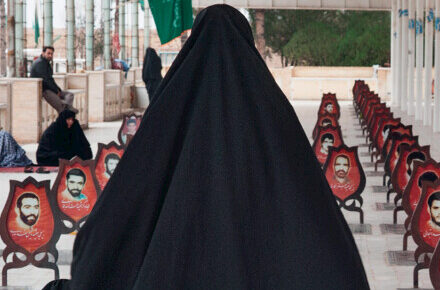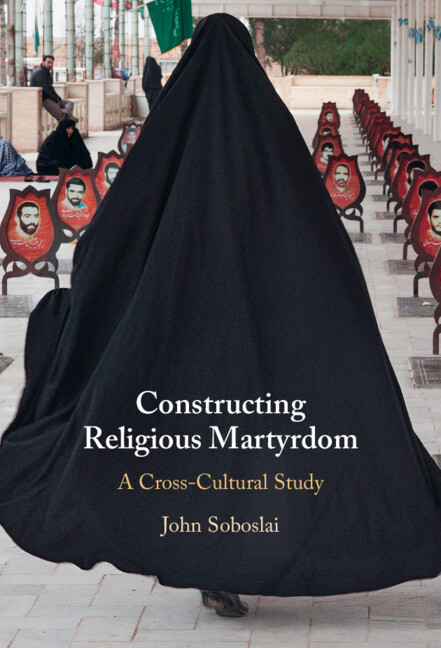
In 2012, I first heard about the spate of self-immolations happening in the traditional lands of Tibet. It seemed every day more people burned themselves to death while publicly condemning the Chinese Communist Party (CCP) and praying for the Dalai Lama’s return from exile. These self-immolators were commemorated in the Tibetan Martyr’s Memorial in Dharamsala, India—the home of the exiled Dalai Lama—and in public remembrances of the fallen as martyrs in the struggle for Tibet.
As a student of early Christianity and modern Islamism, traditions that boast well-developed martyrdom traditions, I wondered about the use of the term ‘martyr’ in the Tibetan context. ‘Martyr’ translated the Tibetan word ‘pawo’, a word applied to those deemed to have died in a heroic self-sacrifice, but while there is a long lineage of self-sacrifice within Buddhism, the term itself had little history. Moreover, these monks, nuns, and laypeople intentionally shouting for freedom or remaining utterly silent while auto-cremating resembled Christianity and Muslim martyrs in some regards but were notably different in others. I began to wonder, what lies at the conceptual core of the martyr? Aside from the spectacular nature of the deaths, what is it about martyrdom that captures our imagination and inspires us to the depths of resistance? What accounts for the human drive to celebrate some deaths over others, and what goes into those decisions? Why, ultimately, is the martyr such a potent symbol?
These were the questions that prompted me to write Constructing Religious Martyrdom: A Cross-Cultural Study. I wanted to examine martyrs of different historical, political, and religious contexts to discover if there was any universal coherence to the martyr figure, and in hopes of better understanding the source of their power. I embarked on an analysis of martyrdom within four distinct times, places, and religious traditions: proto-Orthodox Christianity, Shi’a Islamism of the 1980s, loyalist and anticolonial Sikhism around WWI, and the self-immolations that spurred the project.
My selection of these case studies stemmed from their differences. If martyrdom is a coherent concept, there should be congruent feeatures no matter how varied the circumstances. The term “martyr” is coined in Christianity, where it mutated from its traditional meaning of a witness in a court into a label for a holy death. In the so-called cradle of Christian martyrdom—second-century Asia Minor—deaths labeled martyrdoms were made through state execution for the crime of not paying proper homage to the Roman state. Christian tales of the period framed these deaths as imitations of Jesus, while Roman texts showed bewilderment that Christians would rather die than burn a little incense to the emperor’s genius. As the Roman legal structure was grounded in the relationship to the deities of Rome, those who refused to acknowledge the foundation of that institution were dangerous and seditious. Christian communities, on the other hand, held that it was their lot to suffer like Christ, and therefore saw martyrdom as the due of the most devout and loyal members of the new ‘religion’.
Loyalty and devotion would prove central to the other cases of martyrdom, along with the perception of a religious culture under threat. So-called ‘suicide bombers’ carrying out ‘martyrdom operations’ against those perceived as enemies embraced the same language while challenging the image of the martyr who peacefully accepts their fate. Shi’a Muslims in late twentieth century Iran and Lebanon, united in reverence of Ayatollah Khomeini as God’s mouthpiece on earth, embraced struggle in the path of God (a.k.a. jihad) as the mechanism by which to bring about God’s just rule. Groups like Hezbollah and the Iranian Basij corps employed tactics where victory was sought through intentional self-sacrifice. Following their death, the perpetrators of such sorties were granted the label of martyr.
The label ‘suicide bombing’ points to the essential issue of interpretation. For many, these are suicidal acts, but that label is inaccurate according to those who embrace them as martyrdoms. In fact, each of these traditions explicitly classifies suicide as an immoral act, but martyrdom (which is everywhere an intentional act resulting in the body’s destruction) is celebrated. There is no objective truth about the act’s nature. At its very core, martyrdom is an act of interpretation.
Nowhere was that fact more evident than in the plural martyr creation within Sikh communities during the early twentieth century. Many Punjabi Sikhs enlisted in the British Indian Army (BIA) to serve a government seen to be the prophesized caretakers of Sikhs and Sikhism. ‘Being true to one’s salt’ by fighting for the British was understood to be a religious duty by many Sikhs in South Asia, and those who fell in that duty were remembered as martyrs.
North American expatriate Sikh communities, on the other hand, saw the British Raj as an imperial power who invaded and colonized Sikh communities. For these, opposition to the British was the sacred duty; the teachings of the Gurus demanded that Sikhism be both the spiritual and temporal power on earth, and the British usurped that power. Soldiers falling in the BIA were not martyrs but fools who had been duped. Those who died opposing the British were the true martyrs. Again, perspective defines martyrdom.
Tibetans also held that both spiritual and worldly power were vouchsafed in their religion, and particularly in the Dalai Lama, an earthly bodhisattva who channeled righteousness into the world. The CCP that claims sovereignty over Tibet sees the Dalai Lama as a terrorist and schismatic, and any who support him are decried as criminals. Prayers for the Dalai Lama are religious acts, but also political ones, making the conflation of those spheres a key component of martyrdom. The other cases echo the same: martyrdom is religious and political.
Conceptually, martyrdom is often shorthanded as ‘dying for a cause or belief’ which serves as a tidy articulation with little depth or clarity. What I found in these contexts is a matrix of concerns, interpretations, histories, and religious cultures that culminate in performances of death that earn the label of martyrdom. In each case the shape of death was different, the models for self-sacrifice were different, and the circumstances of the communities that claimed martyrs were different. What was constant was a group that saw their ways of life to be under threat, framed its opposition through reference to sacred models, and embraced some deaths aligned with those models as particularly sacred.
Be it the Roman state, the CCP, or the colonial and imperial powers of the ‘West’, an institution claiming sovereignty over these communities attempted to impose a way of life at odds with divine directives. It didn’t matter that these institutions believed they were acting in the best interest of their subjects; at least for some of those subjects, living according to their demands amounted to denying the true source of cosmic authority. Martyrs categorically refused and accepted death as their reward. At their core, martyrs are agents in a contest over who can legitimately demand suffering, a question of what I term a sovereign imaginary.
Sovereign imaginaries are constructions of absolute authority integrated into socially bounded identities. Being a Christian/Muslim/Sikh/Buddhist is defined not merely by the beliefs held, the practices engaged, or the cultural embeddedness of a community, but in an affirmation that these beliefs, practices, and cultures are illustrative of right way to live on earth. An imagined power grounds that affirmation through scripture, reflection, or revelation. Embracing that power at all costs defines the martyr and their community.
Max Weber recognized that the state is the structure that claims the monopoly on legitimate violence, but martyrs demonstrate that without enactment it will remain merely a claim. They show true power over life and death must be demonstrated through willing submission, no matter the stakes. In the public performances of a death linked to an alternative power structure—an alternate sovereign imaginary—martyrs show we are always free to act in line with what we construe as the right, so long as we embrace the consequences of our choices. Our actions exhibit our understanding of the world, of who we are, and what we believe to be right. The martyr’s act is not of a different kind, but simply a higher pitch. In their spectacular deaths they provide a piece of evidence about their truth, and their communities embrace and verify that truth in their application of that powerful and contested label: martyr.

Latest Comments
Have your say!